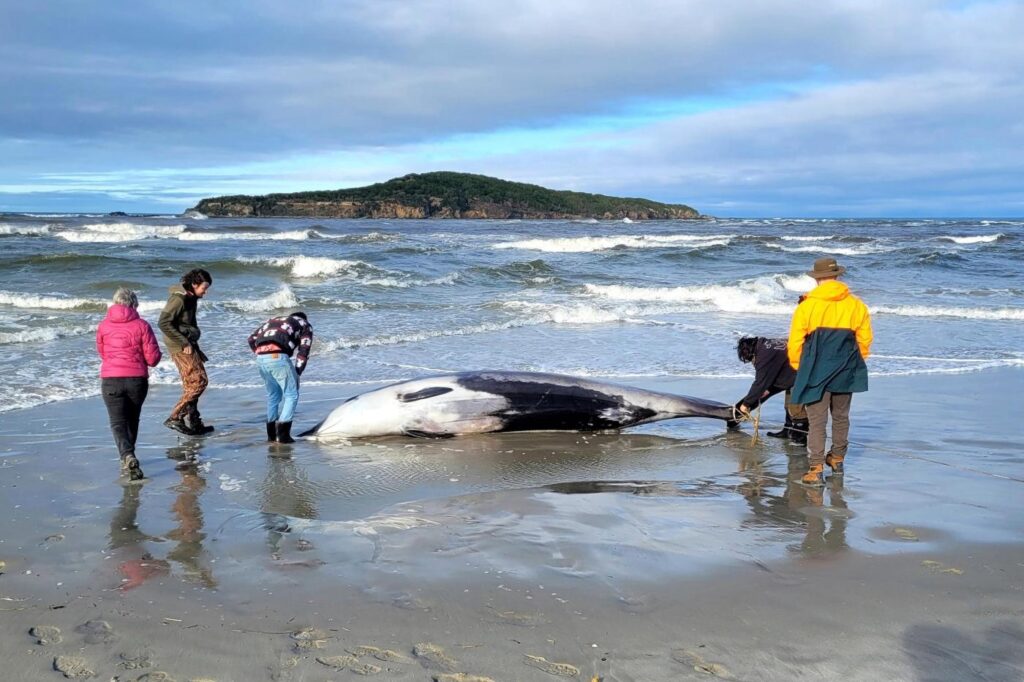
By ROD McGUIRK
MELBOURNE, Australia (AP) — Scientists suspect the first complete specimen ever recorded of the world’s rarest whale died from head injuries, an expert said Friday.
Related Articles
Officials explore helping Poche’s water quality, a regular on the Beach Bummer list
Monarch butterflies to be listed as a threatened species in US
World’s oldest-known wild bird lays an egg in Hawaii at age 74
Blue states prepare for battle over Trump’s environmental rollbacks
EPA hails ‘revitalized’ enforcement efforts as Biden administration heads to exit
The first dissection of a spade-toothed whale, a type of beaked whale, was completed last week after a painstaking examination at a research center near the New Zealand city of Dunedin, the local people who led the scientific team, Te Rūnanga Ōtākou, said in a statement issued by the New Zealand Department of Conservation.
A near-perfectly preserved 5-meter (16-foot) male was found washed up on a South Island beach in July. It was the first complete specimen ever recorded. There have only been seven known sightings and never of a living spade-toothed whale.
New Zealand conservation agency beaked whale expert Anton van Helden said the whale’s broken jaw and bruising to the head and neck led scientists to believe that head trauma may have caused its death.
“We don’t know, but we suspect there must have been some sort of trauma, but what caused that could be anyone’s guess,” van Helden said in a statement.
All varieties of beaked whales have different stomach systems and researchers didn’t know how the spade-toothed type processed its food.
The scientific team found the specimen had nine stomach chambers containing remnants of squid and parasitic worms, the statement said.
Among the more interesting finds were tiny vestigial teeth in the upper jaw.
“These little teeth embedded in the gum tells us something about their evolutionary history. It’s remarkable to see this and it’s just another thing that we had no idea about,” van Helden said.
“It’s a week I’ll never forget in my life, it’s certainly a highlight and it’s the start of the storytelling around this beautiful animal,” van Helden added.
The dissection was also notable because scientists and curators worked together with local Māori people to incorporate Indigenous knowledge and customs into each step of the process.
Following the dissection, the local iwi, or tribe, will keep the jawbone and teeth of the whale before its skeleton is displayed in a museum. 3D printing will be used to replicate those parts retained by the iwi.
To Māori, whales are a taonga -– a precious treasure -– and the creature has been treated with the reverence afforded to an ancestor.
New Zealand is a whale-stranding hotspot, with more than 5,000 episodes recorded since 1840, according to the Department of Conservation.
The first spade-toothed whale bones were found in 1872 on New Zealand’s Pitt Island. Another discovery was made at an offshore island in the 1950s, and the bones of a third were found on Chile’s Robinson Crusoe Island in 1986.
Associated Press writer Charlotte Graham-McLay in Wellington, New Zealand, contributed to this report.
